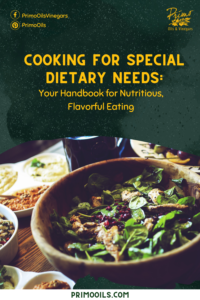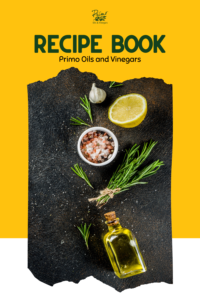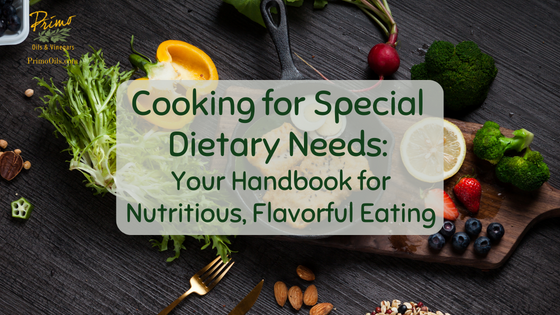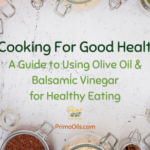Cooking for those with special dietary needs does not have to be a challenge, as the hostess with the mostest we encourage you to think of it as an opportunity to explore a diverse range of ingredients and cuisines. Tailoring meals to meet health requirements or personal choices can be both rewarding and beneficial for well-being. Whether due to allergies, sensitivities, or lifestyle choices, such as veganism or keto diets, the key lies in ensuring all meals are nutritionally balanced and full of flavor.
Navigating through the murky world of dietary restrictions can be simplified with a good understanding of nutrition and alternative ingredients. Mastering this skill can help you cook healthier meals for your family, as well as host anyone in your home without fear of leaving someone hungry. This guide offers practical advice on how to prepare healthy and delicious meals that adhere to various dietary requirements.
Key Takeaways
- Special diets require thoughtful ingredient choices to maintain both taste and nutrition.
- Expert knowledge helps tailor meals to individual dietary needs effectively.
- Balanced meals are achievable for any diet with proper planning and creativity.
 Understanding Special Dietary Needs
Understanding Special Dietary Needs
Special dietary needs encompass a range of restrictions that individuals might have due to health conditions, personal beliefs, or cultural practices. The older we get, the more people we know who are abstaining from this or that. Sometimes it’s by choice and other times it’s due to health, regardless of the reason, tailoring meals to these needs requires a careful consideration of the individual’s requirements to ensure they are both nutritious and enjoyable.
Identifying Common Dietary Restrictions
Individuals may require special diets that are gluten-free, dairy-free, nut-free, or free from other allergens due to health conditions like celiac disease, lactose intolerance, or allergies. Other dietary restrictions include vegetarianism, veganism, and ketogenic diets, which can be due to personal choices or medical recommendations. For those with diabetes, low-sugar or low-carbohydrate diets are often necessary. When preparing meals for special dietary needs, one must first accurately identify which foods are permissible and which to avoid.
Nutritional Considerations
Providing meals for special dietary needs should not compromise on nutrition. Delivering a balanced meal containing necessary macronutrients—carbohydrates, proteins, and fats—as well as essential vitamins and minerals is the key to success. For instance, vegan diets should include sources of vitamin B12, iron, and calcium, often found in fortified foods or supplements. When making delicious meals for special dietary needs, it’s important to find alternatives that cater to restrictions while also contributing to the person’s overall well-being, such as utilizing quinoa as a gluten-free grain packed with protein.
Psychological Aspects of Dietary Restrictions
We cannot overlook the psychological impact of dietary restrictions. Food is a source of pleasure and social engagement, and not being able to partake in certain meals can be isolating. Therefore, creating meals that are not only healthy but also flavorful and appealing for those with dietary restrictions is essential.
Hosting Guests with Special Diets
We felt it was important to offer a hostess’s take on cooking for dietary restrictions. Offering a variety of foods and mimicking traditional dishes with alternative ingredients can help in providing a more inclusive and enjoyable eating experience. At the same time, when you try to please everyone, you often end up pleasing no one!
How to Communicate with Guests About Dietary Needs
When hosting for groups or families, it’s important to have clear communication and an understanding of what you can and cannot provide. You are the host and your needs matter too! It’s admirable to want to include everyone, but your guests would rather bring a dish of their own than have you overwhelm yourself with every little detail.
It is an accepted practice to include a line requesting any dietary requirements along with your initial invitation. Many people will include a discrete line under the RSVP instructions. This is a good place for it because you can also give a date to hear back by.
“Please let me know of any dietary restrictions by DATE so I can do my best to make accommodations.”
If you’re hosting a smaller or more informal gathering, a quick question of your guests is all it takes.
“Do you have any food sensitivities or allergies?”
“Are there any dietary restrictions in your group?”
How to Accommodate Guests with Different Dietary Needs
Now that you have an idea of your guests dietary requirements, you can start comparing your menu with their needs. Often a quick substitution is all you need to keep the menu intact and your guests happy.
If you have a guest who has a severe allergy to certain foods you will want to make sure that there is no cross contamination in the preparation of your dishes. Use a separate cutting board, knife and other cooking utensils in order to ensure safe preparation.
Many sensitive eaters are used to bringing a dish of their own or even eating beforehand. So if you find that there are too many conflicting needs or you cannot alter your menu it’s best to communicate that with your guests beforehand.
Cook Separately or In Batches when Cooking for Special Dietary Needs
An easy fix for if you are dealing with one or two sensitivities is to prepare two separate batches. A lot of soups, pasta sauces and even chili are better the next day. By preparing two separate batches, you ensure all members of your party enjoy the same dish.
 How to Inform Guests About Ingredients
How to Inform Guests About Ingredients
If there are people with food allergies or sensitivities present at your party, make sure you clearly label the items that were prepared with them in mind. This can be anything from a folded index card to bringing out your family’s old place settings and writing Gluten Free of Vegetarian instead of names. It’s best not to call out a specific person on the cards in case this should bring them embarrassment. And you may find that several members of your party enjoy the alternate version as well.
How to Cook for Special Dietary Needs
Crafting balanced meals is a core aspect of cooking for special dietary needs, as it ensures that the necessary nutrients are provided without compromising on flavor. This section will address targeted meal planning strategies, ways to adapt and substitute ingredients for dietary restrictions, and methods for enhancing meals with the right flavor profiles.
Meal Planning Strategies
When planning healthy meals for special dietary needs, one should concentrate on including a variety of food groups. Here are some strategies:
- Pre-plan weekly meals: This helps in ensuring a diverse range of nutrients are included.
- Consider macronutrient balance: Aim for a good mix of proteins, carbohydrates, and fats tailored to specific dietary
 requirements.
requirements.
For delicious meals for special dietary needs, the planning stage should not overlook the importance of taste and variety to keep meals enjoyable. Incorporating ingredients like whole grains, lean proteins, and healthy fats contributes to both taste and nutritional value.
Recipe Adaptation and Substitution
Adapting recipes for cooking for special dietary needs can be simple with the right substitutions. Here’s a brief guide:
- Proteins: Replace meats with legumes or tofu for vegetarian diets.
- Dairy: Use nut-based milk or yogurt for lactose intolerance.
- Gluten: Opt for gluten-free flours like almond or rice flour in baking.
It is pivotal to ensure that substitutes align with nutritional needs and keep the integrity of the dish. For instance, using avocado as a fat substitute adds both creaminess and healthy fats to meals.
Flavor Profiling and Seasoning
Flavor profiling is crucial in creating delicious meals for special dietary needs. Seasonings can make or break a dish:
- Herbs and Spices: Use a variety to add depth without additional salt or sugar.
- Acid and Heat: Introduce elements like lemon juice or chili to improve flavor without harmful additives.

A well-seasoned dish can greatly enhance the dining experience for those with dietary restrictions. By focusing on flavor profiles and cooking methods, meals can remain exciting and satisfying.
Dietary Needs Recipe Ideas
You can easily alter many of the recipes in our Primo Cookbook to match a variety of dietary needs. When cooking for special dietary needs and use real ingredients and unprocessed food, you’ve already eliminated many of the ingredients that people are sensitive to.
Check out our Primo Oils Cookbook for inspiration for your next dinner party.






